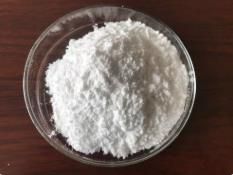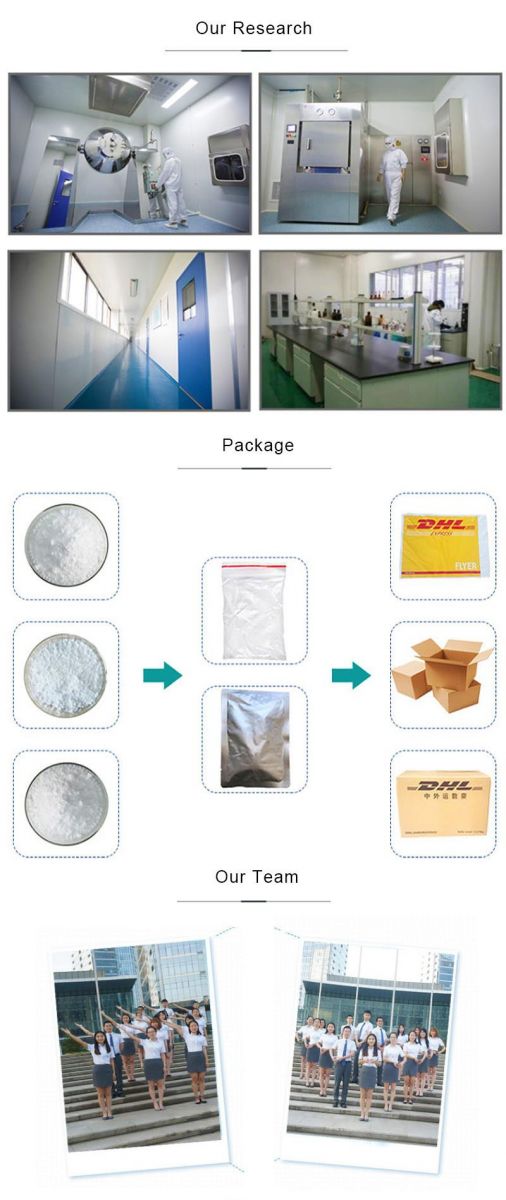API and Intermediate
Deferasirox

Product Name:Deferasirox
CAS:201530-41-8
MF:C21H15N3O4
MW:373.3615
EINECS:685-491-5
Product Categories:Aromatics;Chelating Agents & Ligands;Heterocycles;Intermediates & Fine Chemicals;Pharmaceuticals;Pharmaceutical intermediate;Exjade, ICL-670, ICL-670A, CGP-72670;Chelating agent (iron);Aromatics Compounds
Mol File:201530-41-8.mol
Melting point:260-2620C
storage temp.:-20°C Freezer
HS Code:2933997500
PSA:107.95000
LogP:1.08550
Density:1.472g/cm3
Boiling Point:651ºC at 760mmHg
Flash Point:347.5ºC
Place of Origin:China
Type:Blood System Agents
Grade Standard:Medicine Grade
Usage:Animal Pharmaceuticals
Purity:99%
Shelf life:2 Years
Storage temp:-20°C Freezer
Refractive Index:1.699
Vapor Pressure:0mmHg at 25°C
HS Code:2933990090
Packaging Details:For small quantity: Bag
Commercial quantity:fiber drum
Uses:1. DFS can be used to treat the reversible renal insufficiency caused by Fanconi syndrome.
2. It can be used for the treatment of secondary hemochromatosis.
3. It can be used for the treatment of delayed skin porphyria.
4. It can be used for the treatment of myelodysplastic syndromes.
5. It can be used for the treatment of iron overloading caused by blood transfusion for patients (older than 2 years old) of chronic anemia This information is compiled and edited by Ding Hong of Chemicalbook. (2015-09-18)
Temozolomide is used in the treatment of adults with refractory pleomorphic glioblastoma and anaplastic astrocytoma of chemotherapy drugs.
Description:Iron overload is a potentially life-threatening cumulative toxicity that occurs frequently in patients who receive multiple blood transfusions for the treatment of certain types of chronic anemias such as thalassemia and sickle-cell disease, as well as for the treatment of myelodysplastic syndromes. Progressive iron overload, if untreated, often causes injury to heart, liver, endocrine organs, joints, and other target cells and tissues. Iron overload is treated by administration of iron chelators, which mobilize the iron deposits into soluble complexes that can be excreted from the body. The current standard of care in iron chelation, deferoxamine (Desferal ?), is effective, but typically requires subcutaneous infusion lasting eight to twelve hours per day, for five to seven days a week for as long as the patient continues to receive blood transfusions. In many patients, the need for transfusion and chelation therapy may be life-long. This has resulted in low patient acceptance of the product. Deferipone is an orally available iron chelator that has been marketed in certain parts of the world; however, it has a short duration of action and may be associated with serious side effects. Deferasirox is an orally active tridentate ligand that binds iron with high affinity in a 2:1 ratio. The recommended dosage is 20 mg/kg of body weight once, daily. Deferasirox is synthesized in two steps starting from salicylamide, by first condensing with salicyloyl chloride to afford 2- (2-hydroxyphenyl)benz[1,3]oxazin-4-one, and subsequent reaction of this intermediate with 4-hydrazinobenzoic acid. Deferasirox is rapidly absorbed following oral administration, reaching peak plasma concentrations at 1.5–4 h. The Cmax and AUC increase approximately linearly with dose after both single administration and under steady-state conditions. Deferasirox is highly protein bound (99%), almost exclusively to serum albumin. It has a volume of distribution at steady state of 14.37±2.69 L, mean elimination half-life ranging from 8 to 16 hours, and oral bioavailability of 70%. Glucuronidation is the main metabolic pathway for deferasirox, with minimal oxidative metabolism by CYP450 enzymes. Deferasirox and metabolites are primarily excreted in the feces via the bile (84% of the dose). Clinical trials involving more than 1000 adults and children demonstrated that deferasirox, at 20–30 mg/kg/day led to maintenance of or reductions in liver iron concentration, an indicator for body iron content in patients receiving blood transfusions. The most frequently reported adverse events were transient in nature and included mild to moderate nausea, vomiting, diarrhea, abdominal pain, and skin rash. In addition, patients treated with deferasirox experienced doserelated increase in serum creatinine at a greater frequency compared with deferoxamine- treated patients (38% vs. 15%, respectively). However, most of the creatinine elevations remained within the normal range. As with deferoxamine injection, deferasirox was associated with a low incidence of ocular and auditory disturbances.
Payment:WU, Wire Transfer/Telegraphic Transfer, Venmo,USA BANK ACCOUNT
Shipping:by TNT,FEDEX,DHL UPS,EMS etc
Shipping:
By Courier: Fedex, EMS, DHL, TNT, UPS, etc. 7-10 days product will reach you after payment received, if it’s agreed as ready stock before order.
By air, airport to airport
By sea
Our Advantages
1.Competitive price
2.Fast Delivery Within 3 days
3.Professional factory





